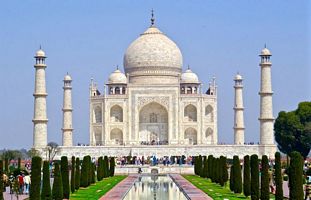Weather is an important part of Indian civilization and life. The weather here always affects the attendance, natural beauty, and economic development. India is a very large country and different types of weather can be seen throughout the year in its different parts of the country. In this article, we will get information about weather in India and understand its importance.
Indian weather patterns are very diverse. There are countless types of weather between the maritime weather on the western coasts, the snowy weather in Himachal Pradesh, and the snowy summers in South India. Due to these different dimensions of weather, there are different types of impacts on the life of flora, fauna, and people in India.
India has also made great progress in weather monitoring and science. With the help of today's modern technological equipment, meteorologists and botanists have made major changes in weather forecasting and monitoring.
Tourism in India never stops due to weather, as tourists from all over the world come to visit India. There are three main categories of weather in India, which are responsible for determining the weather in India – summer, monsoon and winter. Any tourist visiting India should be aware of this.
Through this article, we will know the characteristics of weather in different parts of India, understand the natural play of weather, and the importance of weather in the development of India. Along with this, we will learn how weather monitoring plays an important role in people's safety and future planning.
Come, let us journey into the mysterious and colorful world of Indian seasons, where this treasure trove of natural diversity gives us the opportunity to learn something new every day.
Hot Summer
The northern plains are completely under the influence of heat. If you are planning to visit India during summers (April to mid-July), you will need light clothes, glucose, sunscreen lotion and sunglasses. The Himalayas in North India, the Nilgiri Hills in South India and the small hill stations of the Western Ghats in Western India are perfect places to escape the heat.
Heavy Rain
Rain starts in India in the month of June and makes its presence felt till mid-September. In India, especially South India, there is a possibility of heavy rain, so bring waterproof clothes like raincoat and umbrella.
Cold Winters
Winter is the right time to visit India. The mornings are foggy and the days are pleasant, while the nights are very cool in lush green North India. In other parts of India, cold remains within the tolerance range. The snowy hills and snow regions of North India are good for enjoying winter sports. You will have to wrap yourself in a large number of woolen replacements. Additionally, cold creams and moisturizers are also essential. In contrast, South India has moderate temperatures during winter, so you don't need much to pack to see the region.
Top Stories
-

Discover Exciting Places to Visit in Agra, Uttar Pradesh - Your Ultimate Travel Guide
-

Explore Exciting Places to Visit in Mumbai, Maharashtra - Your Ultimate Travel Guide
-

Explore the Wonderful Places to Visit in Manali, Himachal Pradesh - Your Ultimate Guide!
-

Places to Visit in Solan Himachal Pradesh - Explore the Best Tourist Spots
-

Discover the Best Places to Visit in Kangra, Himachal Pradesh: A Traveler's Guide




